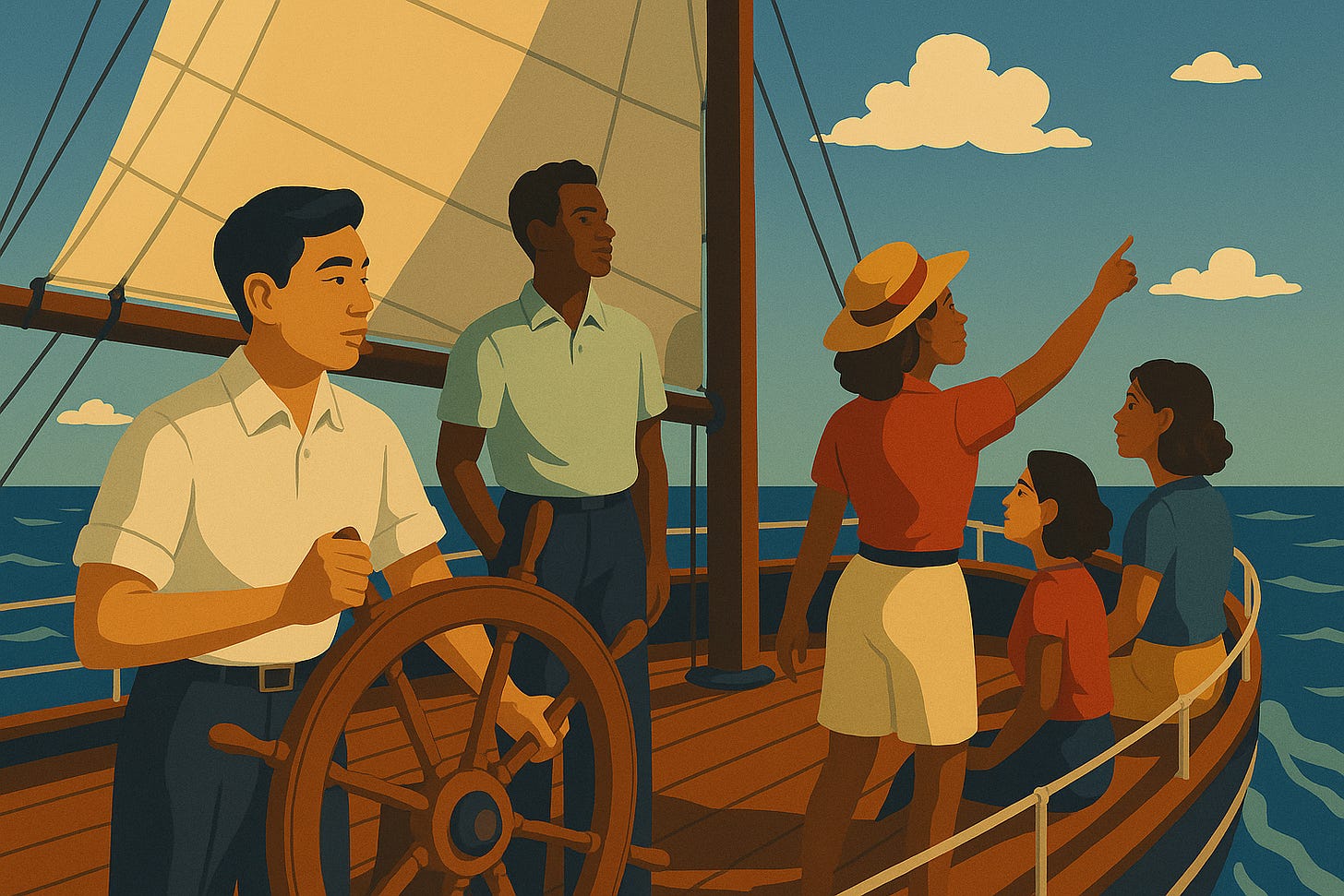Strategy Beyond the Blindfold: Making Sense in Complex Times
Insights on strategic design, clarity, and sensing capabilities for modern leaders
Hi readers, welcome to another issue of Censemaking!
In our last issue, we introduced the role of complexity in shaping our world and provided practical ways to think about it. This issue, we build on that and start to explore the matter of strategy and how to plan, work and be effective in complex conditions. It’s part of a series of lessons on leading in complex times using strategic design.
The aim is to help you create more effective actions for the health of your people, organization, and the communities around you.
Below are references to the series posts on the Censemaking website, along with resources you can use as a leader, change-maker, or someone working in complex contexts such as healthcare, social services, education, and business, by design.
Let’s get started.
The Strategy Confusion Crisis
Many leaders believe they have a strategy when, in fact, they don't. They confuse goals with strategy, mistake mission statements for strategic direction, and conflate tactics with strategic thinking. This confusion isn't just a matter of semantics—it's a fundamental barrier to navigating complexity effectively.
Strategy is not:
A goal (what you want to achieve)
A mission (your purpose)
A vision (your aspiration)
Tactics (the actions you take)
Strategy is: An intentional, designed process for determining what to focus on and how to achieve your desired outcomes, taking into account your current context and the resources required to accomplish your objectives. It is about understanding the layers of the ecosystems you’re a part of.
From Planning to Strategy-Making
Investing in strategy-making involves marshalling some of your most valuable organizational resources: time, focus, leadership capital, and money. But the returns are substantial.
The ROI of Strategic Design:
Clarity and Alignment: Good strategy provides clarity in purpose, direction, and operating conditions. This alignment creates coherence, ensuring people's energy flows in the same direction while reducing duplication and waste. Research shows aligned teams are 72% more likely to outperform competitors.
Better Decisions, Faster: Strategic design enables better prioritization under uncertainty through scenario planning, risk anticipation, and structured experimentation. This prepares leaders to respond quickly to change, not by predicting the future, but by developing adaptive thinking within a range of possibilities.
Resource and People Engagement: Strategy clarifies what you have and what you need. It engages human talent by showing people how they can contribute meaningfully to something larger than themselves—a primary factor in job satisfaction and retention.
Innovation Capacity: Strategic thinking opens space for intentional innovation. Without a strategy, innovation becomes scattershot and unscalable. Strategic design helps identify opportunities and create viable pathways to capitalize on them.
Resilience in Complexity: When undertaken as strategic design, strategy enables organizations to thrive within living systems rather than be subject to the whims of complexity.
The Sensing Problem: Strategy Blindness
Among the great challenges of complexity and disruption is knowing what to look at and how to make sense of what you see. Many leaders suffer from "strategy blindness"—an inability to detect the weak signals that precede major changes.
This blindness stems from educational and organizational systems that emphasize linear, normative approaches: KPIs, SMART goals, and command-and-control structures. While these have their place, they can blind us to the subtle patterns that indicate emerging shifts.
Developing Somatic Intelligence in Strategy
Our bodies constantly process environmental signals below conscious awareness—shifts in tension, rhythm, temperature, and spatial dynamics. Strategic leaders can cultivate similar peripheral awareness of organizational, ecosystem and market signals.
Just as human perception excels at detecting subtle pattern breaks—the off-note in music, the micro-expression revealing emotion—strategic sensing identifies weak signals before they become trends. This is somatic intelligence and it can apply to people and organizations.
Weak signals are early clues about potential changes—incomplete bits of information that might seem unimportant but could point to major shifts ahead. They're called "weak" not because they lack importance, but because they're easily obscured by noise - the many different things going on at once.
How to improve your weak signal detection?
Training Your Strategic Senses
Sharpen Your Observation Habits
Look for things that don't fit normal patterns
Notice when experts disagree strongly
Pay attention to outliers and anomalies
Ask regularly: "What's different today?" or "What surprised me this week?"
Expand Your Information Diet
Break out of information bubbles
Seek diverse perspectives and sources
Read outside your field
Pay attention to what's happening at the edges—different regions, age groups, industries
Practice Connecting the Dots
Link seemingly unrelated information
Ask: "What patterns am I seeing across different areas?"
Create regular reflection time
Develop comfort with uncertainty and incomplete information
Make Sense Socially
Build networks that enable honest conversation
Share insights and test hypotheses with others
Experience things in shared ways
Develop the intimacy and trust needed for confident decision-making
Strategic Design as Creative Practice
Creative practice is a skill that improves with use. Many of us have lost touch with our creative capacity, but it can be recovered through time, care, and attention. Strategy becomes a place where we bring creative skills to bear on what we see, channeling observation into workable adaptive plans.
Individual and organizational mindfulness practices build the mental acuity and sensitivity needed to feel, see, and sense patterns. Building organizational cultures that intentionally learn—through developmental evaluation and strategic learning plans—makes a considerable difference.
Creativity is also about spaces and places; creative spaces are those that inspire new thinking, connections, reflection, and generatively.
The Way Forward
Strategy isn't just about planning—it's about preparing to meet the future, shape it, and not just react to what comes. Like skilled sailors who read wind patterns and adjust their course while maintaining direction toward their destination, strategic leaders develop the sensing capabilities to navigate complexity.
When the path ahead is uncertain, strategy becomes less of a plan and more of a practice. The smartest move isn't always knowing what to do ahead of time—it's knowing how to keep learning, adjusting, and aligning action with intent.
In our complex world, the organizations that invest in thinking clearly are the ones that perform better, adapt faster, and lead with confidence. This requires moving beyond strategy blindness to develop the sensing capabilities that turn weak signals into strategic advantage.
Ready to develop your strategic sensing capabilities? The future belongs to leaders who can see what others miss and act on insights while they're still emerging. Reach out and let’s talk if I can help you navigate complexity with your organization, network, or clinic.







